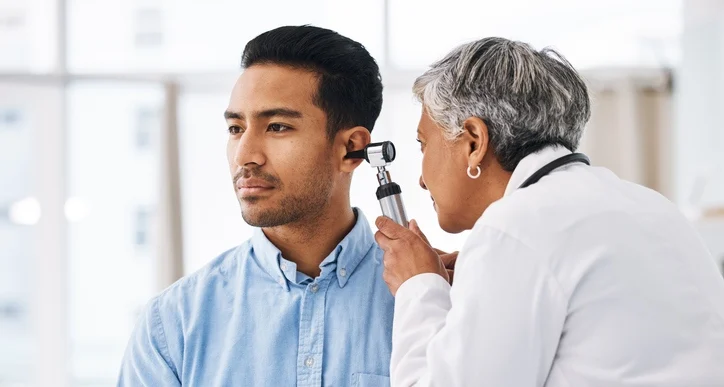
CRNAs Seeking New Best Practices in Pain Management
Certified Registered Nurse Anesthetists (CRNAs) play a vital role in pain management for millions of Americans each year. Within the context of the country’s ongoing opioid crisis, CRNAs are increasingly adopting innovative approaches, such as multimodal pain management, to enhance patient care and minimize reliance on opioids.
These forward-thinking strategies not only improve patient outcomes but also help mitigate the risk of addiction associated with traditional pain management practices. This blog explores the latest best practices, emerging techniques, and evolving roles for CRNAs in advancing pain management.
Advanced Pain Management Guidelines (2024-2025)
National organizations, including the American Association of Nurse Anesthesiology (AANA) and the American Society of Anesthesiologists (ASA), have consistently championed updated pain management standards. Their latest guidelines reflect a continued focus on multimodal analgesia and opioid-sparing approaches.
Multimodal Analgesia and Opioid-Sparing Strategies
Multimodal analgesia combines various pain management techniques to enhance efficacy while reducing dependence on opioids. These strategies target multiple pain pathways simultaneously, offering superior relief with fewer side effects. Examples include combining regional nerve blocks with non-opioid medications and utilizing nonpharmacologic interventions.
According to the AANA, patient education plays a critical role in opioid-sparing strategies. Reassuring patients about their ability to manage post-surgical pain without heavy sedatives fosters engagement and builds trust.
Recent Research
Research into pain management confirms the effectiveness of multimodal approaches. For instance, a 2023 study published in Pain Medicine demonstrated that the integration of regional anesthesia and non-opioid pharmacologic treatments significantly reduces post-operative opioid requirements while improving patient satisfaction scores.
CRNAs are also emphasizing preemptive intervention, a proactive method designed to interrupt pain signals before they register in the brain. Strategies such as pre-surgery blocks and local anesthetics have gained recognition for reducing both acute and chronic pain in patients.
Emerging Pain Management Techniques
Innovative tools and techniques are reshaping the field of pain management, providing CRNAs with an expanded toolkit for patient care.
Regenerative Medicine
Regenerative therapies like stem cell therapy and platelet-rich plasma (PRP) injections are showing promise in treating chronic pain conditions, particularly in joints and soft tissues. While currently more common in sports medicine, this technique offers exciting possibilities for CRNAs specializing in pain management.
Neuromodulation Advances
Technologies such as spinal cord stimulators (SCS) and peripheral nerve stimulation (PNS) have made remarkable strides. These devices deliver electrical impulses to interrupt pain signals and provide relief for patients suffering from conditions like chronic back pain and neuropathy. The minimally invasive nature of these techniques increases their accessibility while decreasing recovery time.
Virtual Reality (VR) and AI Pain Therapy
Emerging digital tools, such as Virtual Reality (VR) and Artificial Intelligence (AI), are revolutionizing pain therapy. VR platforms help patients manage chronic pain through distraction and relaxation techniques, while AI-driven tools provide personalized pain management plans and predictive analytics for treatment optimization.
With both technologies adapting rapidly, CRNAs are well-positioned to harness their potential to minimize reliance on traditional pharmacological approaches.

Addressing the Opioid Crisis with Non-Opioid Solutions
The opioid crisis remains a pressing concern in healthcare, with nearly 6–12% of patients prescribed opioids developing substance use disorder. CRNAs are at the forefront of promoting non-opioid pain management solutions to address this epidemic.
Enhancing Patient Education
One key shift is reframing patients’ expectations around pain. By educating patients that complete pain elimination is neither achievable nor necessary for recovery, CRNAs encourage acceptance of manageable discomfort. This shift reduces over-reliance on drugs while empowering patients to explore alternative solutions.
Promoting Non-Pharmacologic Therapies
Non-pharmacologic pain interventions, including physical therapy, mindfulness techniques, acupuncture, and cognitive-behavioral therapy (CBT), are gaining traction as effective complementary approaches. These alternatives are especially valuable as part of a holistic treatment program for chronic pain patients.
Legal & Regulatory Updates
CRNAs have long faced challenges surrounding their scope of practice due to regulatory and legislative barriers, which can restrict their ability to provide pain management care independently. However, the landscape is beginning to change.
Temporary measures introduced during the COVID-19 pandemic, such as suspending physician supervision requirements for CRNAs, showcased the capability and efficiency of CRNAs delivering unsupervised care. These successes have fueled advocacy efforts by organizations like the AANA to make such measures permanent, increasing access to care in underserved communities.
For CRNAs looking to expand their independent practice or explore new opportunities, locum tenens positions continue to offer excellent flexibility and exposure to diverse clinical settings.
Opportunities for Career and Training Enhancements
Pain management remains a dynamic and evolving field, making continued education and specialization critical for CRNAs.
Advanced Training
CRNAs can bolster their credibility by pursuing specialized certifications, such as Pediatric Advanced Life Support (PALS) or Advanced Cardiac Life Support (ACLS). Pain management-focused workshops and conferences also provide avenues for professionals to deepen their understanding of cutting-edge practices.
Leadership Opportunities
CRNAs are increasingly taking on leadership roles within healthcare systems and advocacy groups, influencing pain management best practices on a national scale. Whether serving on advisory boards, mentoring new practitioners, or spearheading quality improvement initiatives, CRNAs are driving impactful change.
Future-Focused Skills
Investing time in understanding emerging technologies like AI-enhanced diagnostic tools or VR-based therapies can help CRNAs stay ahead of the curve. These skills not only improve patient outcomes but also position CRNAs as trailblazers in modern pain management.
The Path Forward for CRNAs in Pain Management
Certified Registered Nurse Anesthetists continue to redefine pain management through innovation, empathy, and patient-centered care. By adopting multimodal approaches, exploring emerging technologies, and advocating for legislative progress, CRNAs are ensuring that pain management evolves to meet the needs of today’s patients.
For CRNAs seeking ways to enhance their impact in the field, pursuing locum tenens roles or participating in advanced training programs provides invaluable opportunities to grow both personally and professionally.
Are you ready to take the next step in your pain management career? Browse our locum tenens and permanent positions today and shape the future of pain care.
Latest News
Maximizing Opportunity: 4 Internal Medicine Subspecialties Best Suited for Locum Tenens
While internal medicine covers a broad field, certain subspecialties stand out as particularly well-suited to locum tenens positions. From addressing critical care needs to exploring specialized
How Anesthesiologists Can Maximize Their Earning Potential
Anesthesiology is a rewarding career in medicine, both professionally and financially. Yet, like many other professions in healthcare, the earning potential is influenced by a combination of
Exploring OBGYN Subspecialties: Which Path is Right for You?
One of the most exciting aspects of becoming an OBGYN is the opportunity to pursue subspecialties that align with your professional goals, personal interests, and lifestyle preferences.
Screening Guidelines Every Family Medicine Physician Should Follow in 2025
For 2025, significant updates have been made to emphasize personalized medicine, technological advancements, and population-specific needs.
Otolaryngologist Salary Outlook 2025
For otolaryngologists, also known as ears, nose, and throat (ENT) specialists, salary trends reveal not only the growing demand for their expertise but also the evolving dynamics of healthcare
Preparing for Match Week: How to Create Your Rank Order List
Match Week is one of the most exciting—and nerve-wracking—moments in a medical student's life. It's the culmination of years of hard work, perseverance, and ambition, where students
Key Skills for Success in Child and Adolescent Psychiatry
Child and adolescent psychiatry is a deeply rewarding yet multifaceted field that requires a unique blend of clinical expertise, empathy, and communication. These young patients often exhibit
How Much Does a Rheumatologist Make?
On average, salaries for pediatric rheumatologists range from $180,000 to $210,000 per year, according to Salary.com and other healthcare industry sources.











